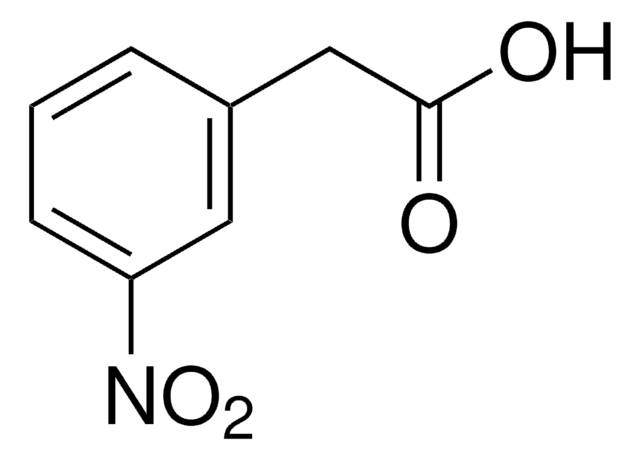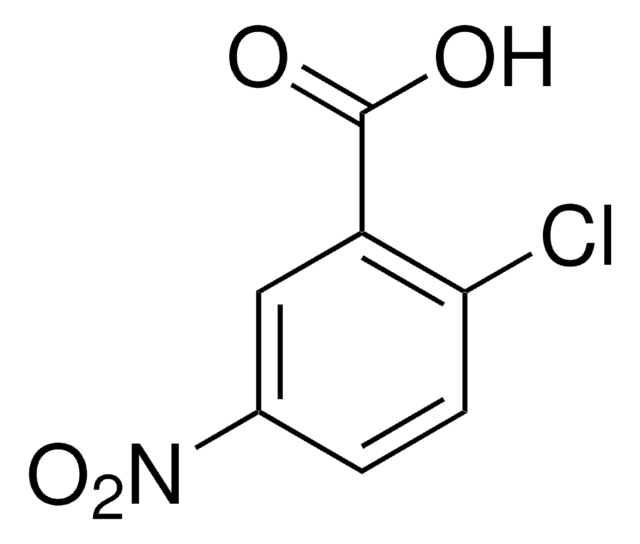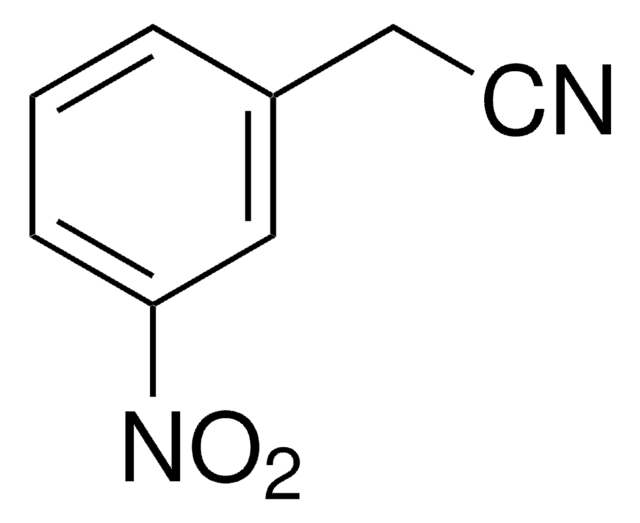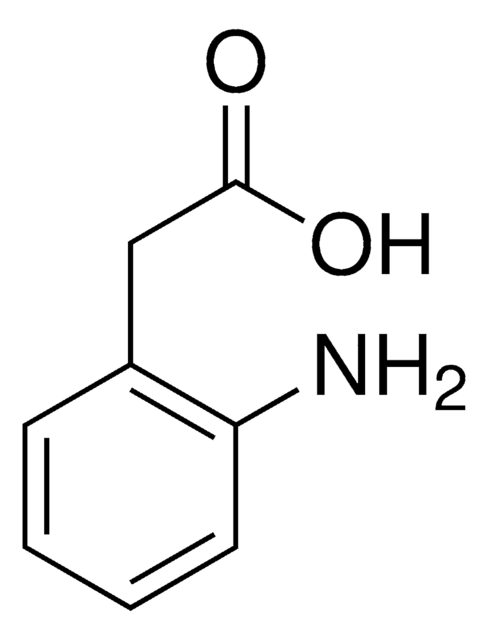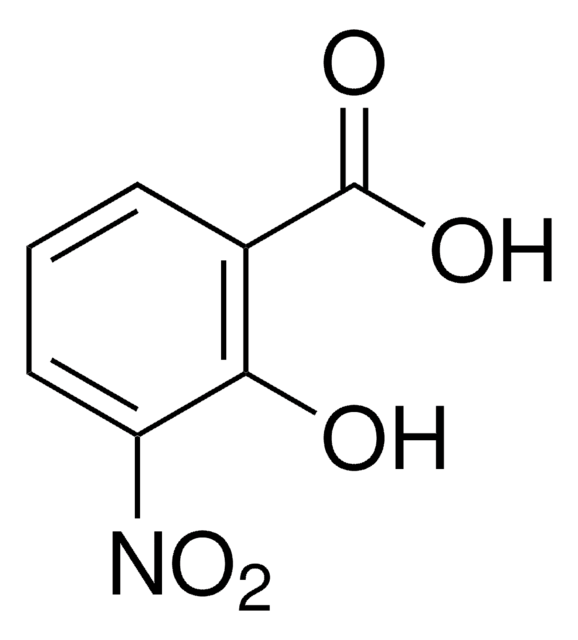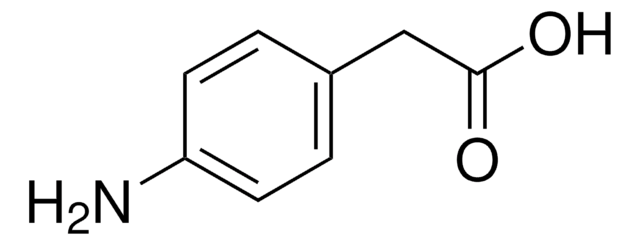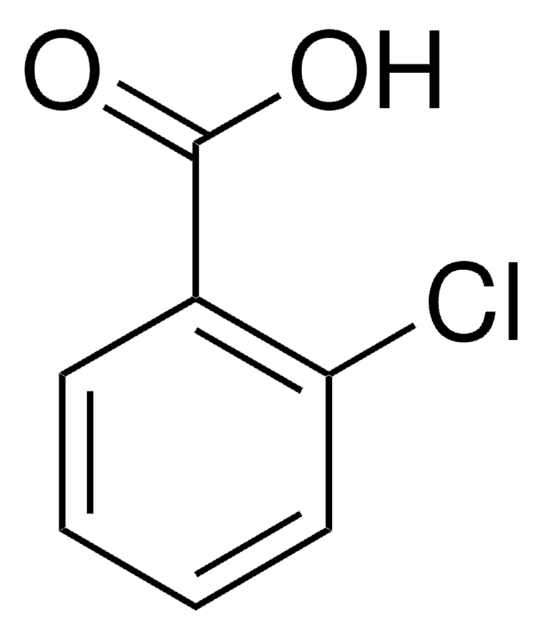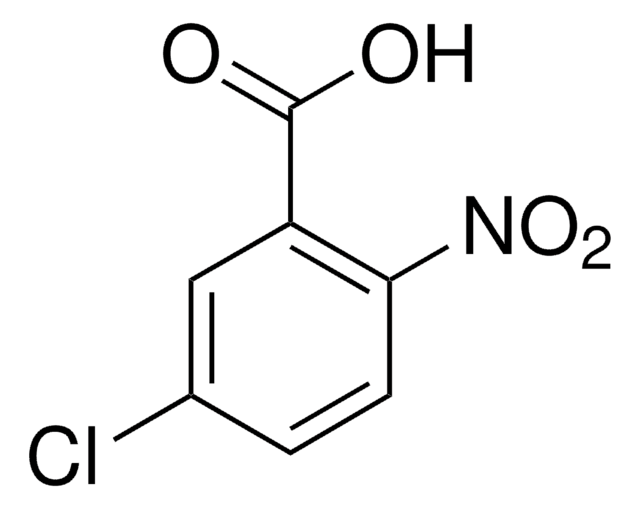All Photos(1)
About This Item
Linear Formula:
O2NC6H4CH2CO2H
CAS Number:
Molecular Weight:
181.15
Beilstein:
1959243
EC Number:
MDL number:
UNSPSC Code:
12352100
PubChem Substance ID:
NACRES:
NA.22
Recommended Products
Quality Level
Assay
98%
form
solid
mp
137-140 °C (lit.)
functional group
carboxylic acid
nitro
SMILES string
OC(=O)Cc1ccccc1[N+]([O-])=O
InChI
1S/C8H7NO4/c10-8(11)5-6-3-1-2-4-7(6)9(12)13/h1-4H,5H2,(H,10,11)
InChI key
WMUZDBZPDLHUMW-UHFFFAOYSA-N
Looking for similar products? Visit Product Comparison Guide
Related Categories
Application
2-Nitrophenylacetic acid was used as an internal standard in the determination of the theophylline solubilizer salicylamide-O-acetic acid.
Storage Class Code
11 - Combustible Solids
WGK
WGK 3
Flash Point(F)
Not applicable
Flash Point(C)
Not applicable
Personal Protective Equipment
dust mask type N95 (US), Eyeshields, Gloves
Choose from one of the most recent versions:
Already Own This Product?
Find documentation for the products that you have recently purchased in the Document Library.
H U Schulz et al.
Journal of pharmaceutical and biomedical analysis, 3(5), 469-475 (1985-01-01)
A high-performance liquid chromatographic method for the determination of the theophylline solubilizer salicylamide-O-acetic acid has been developed in the range 0.5 to 10 microg/ml for human serum and 5 to 400 microg/ml for urine. Reversed-phase ion-pair chromatography was employed with
M K Danks et al.
Clinical cancer research : an official journal of the American Association for Cancer Research, 5(4), 917-924 (1999-04-23)
Several recent studies have examined the possibility of producing tumor-specific cytotoxicity with various enzyme/ prodrug combinations. The enzymes are targeted to tumor cells either with antibodies (ADEPT, antibody directed enzyme prodrug therapy) or with viruses (VDEPT). The goal of the
Leveraging a small-molecule modification to enable the photoactivation of rho GTPases.
Katryn R Harwood et al.
Chembiochem : a European journal of chemical biology, 10(18), 2855-2857 (2009-10-31)
Manuela F Frasco et al.
The FEBS journal, 274(7), 1849-1861 (2007-03-16)
The poorly known mechanism of inhibition of cholinesterases by inorganic mercury (HgCl2) has been studied with a view to using these enzymes as biomarkers or as biological components of biosensors to survey polluted areas. The inhibition of a variety of
Eric Franqueville et al.
Journal of biotechnology, 97(2), 177-182 (2002-06-18)
The hydrolytic activity of a monoclonal catalytic antibody (9A8) (abzyme) with acetylcholinesterase-like activity was investigated in water-in-oil (w/o) microemulsions (reverse micelles) based on sodium bis-2-(ethylhexyl)sulfosuccinate (AOT) in isooctane, using p- and o-nitrophenylacetate (p-and o-NPA) as substrates. The dependence of the
Our team of scientists has experience in all areas of research including Life Science, Material Science, Chemical Synthesis, Chromatography, Analytical and many others.
Contact Technical Service